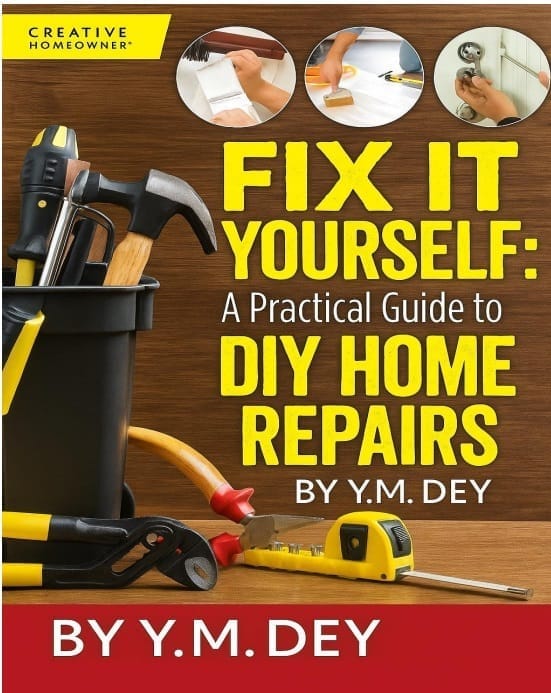Remodeling Contracts & Budgeting Guide: Avoid Costly Mistakes

Remodeling your home can be one of the most exciting—and stressful—projects you’ll ever take on. You’ve imagined the finished space countless times, but getting there is a journey filled with decisions, paperwork, and more than a few surprises. One of the first challenges is figuring out what your dream renovation will actually cost—and why different contractors give you completely different answers for what seems like the same job.
If you’ve ever felt confused by wildly varying estimates or overwhelmed by complex contracts and schedules, you're not alone. Renovation work isn’t just about bricks, beams, and paint—it’s also about budgets, timelines, and trust. This guide will help you make sense of it all, from understanding estimates and setting clear expectations, to handling disputes if things go off track.
Whether you’re updating a single room or giving your entire house a facelift, knowing what to expect can save you time, money, and a lot of frustration. Let’s walk through what it really takes to manage a remodeling project—with your sanity and budget intact.
Watching the Budget
Soliciting bids from remodeling contractors is like shopping for any consumer service—just more drawn out and confusing. The main mystery is that even though the product—your project—is painstakingly defined with plans and specifications, everyone who looks at it sees a different price tag. Few will be as low as the one you envision, and some will be so far from others that it will be hard to imagine the contractors are estimating the same job.
Variation can stem from basics like the law of supply and demand, of course. When loan rates are low, the weather is warm, and a lot of homeowners are looking for estimates, availability falls and prices rise. If you solicit a highly sought-after contractor who doesn’t really need the work, the estimate may soar.
How could it possibly cost so much?
No one likes a whiner, and this is whining. Every remodeling product and service has a cost, and before a client orders a top-of-the-line commercial stove or triple-glazed windows, it’s easy enough to find out what the bill would be.
Contracts
No legal language can make dishonest people honest or change slow, sloppy carpenters into expert woodworkers. But on the up-side, contracts put the job into words that describe its components in enough detail that you don’t have to rely on memory or good will.
A good contract also allows for misunderstandings with a provision for third-party arbitration—a last-chance to maintain job progress on-site where work is done instead of in court. Nobody installs roof flashing in court.
Starting & Completion Dates
To have any teeth, dates should be described as “of the essence of the contract.” That phrase will give more weight to your case in court. But on the job what helps most is a detailed schedule you and your contractor agree to before work begins.
The more detailed your schedule, the better your chance of avoiding serious trouble—of almost any kind and at any stage of the project.
Payments
The best course with remodeling work is to pay for services as you receive them, typically in stages tied to job progress—with two exceptions: a down payment that gives the contractor a financial head start , and a final payment that gives you some leverage with the checklist.
The rest can be split into four equal payments: for the structure, for closing in, for mechanicals (plumbing, heating, cooling, and electrical work), and for finishing work.
Your contractor doesn’t want to hear…
“Lend me a saw; I’ll help.”
“I changed my mind.”
Supervising
Following Codes:
With a plan in hand and a contractor in the wings, there is a moment of calm before the remodeling storm. Most of the pre-job jobs are organizational chores that contractors will eventually tend to if you don’t.
But there are two subjects that won’t tolerate a haphazard or last-minute approach: building codes and zoning ordinances.
Getting Permits
To start the relationship on a positive note, it’s a good idea to visit the building department with your preliminary plans. Ask questions, including the most obvious one: do I need a permit?
Some homeowners try to avoid the supervision and do the job without a permit... but this omission leaves you vulnerable to substandard work and possible fines.
Zoning Regulations
You have to observe building codes and zoning regulations. The main stumbling blocks for remodelers expanding the building footprint are restrictions on property coverage and yard space.
There may be a way out—it’s called getting a variance, and each jurisdiction has its own procedure.
Supervising a Project
How do you keep track of a complicated process undertaken by people you don’t know? You could turn over every detail to the general contractor. But that’s too much like falling asleep in the barber’s chair.
Weekly Meetings
The best way to safeguard your investment is to establish a schedule for meetings on job progress. End-of-week meetings are best.
Include general contractor, subcontractors, and design professionals. Review the previous week’s work, the upcoming week, and an update on payments.
Avoiding Surprises
The meetings are likely to expose a few surprises:
Subcontractor scheduling
Material and design changes
Debates about work scope
Changes & Extras
Any significant deviation from the blueprints needs planning. On big jobs, these alterations are committed to paper with a change order.
You need to find a middle ground on extras—and try to balance them with a give-back on jobs or materials you can live without.
Dealing with Disputes
Settling Disputes
Some problems can’t be helped, but when it comes to major differences about materials, time, and money, discussions too often deteriorate into ugly disputes.
Material Substitutions
Effective contracts include an “or equal” clause. If you disagree about what’s equal, get together with the contractor and review specifications
Time Problems
Time delays can snowball. Catch time problems early and ask for a hard date to return to schedule.
Resolving Disputes
tandard practice is to draw up a punch list at the end of the job. But it’s more sensible to check details in stages.
If issues persist, document the issue with a registered letter and outline your expectations and possible solutions. If needed, an arbitration service or attorney will want to see that you attempted to resolve the issue yourself.
But as I explored the world of DIY, I realized most online resources were either too advanced or too expensive or assumed the reader had years of experience and a fully equipped workshop. That gap inspired the launch of Gear For DIYers—a practical, beginner-friendly resource tailored to everyday homeowners and renters looking to build skills and confidence, one project at a time. Click here for more info
Grab Our Curated Personalized Gift Guide—100% FREE
If you’ve ever paid for simple home repairs or waited weeks for a handyman, you’re not alone. That’s why I created this free guide with practical, step-by-step instructions for fixing common issues around the house — from leaky faucets to squeaky doors and more!
Say goodbye to costly service calls and hello to confident DIY repairs.
Just tell me where to send it, and I’ll deliver
it straight to your inbox—100% FREE.

Grab Our Curated Personalized Gift Guide—100% FREE
If you’ve ever wasted hours scrolling or wandering through stores with no luck, you’re not alone. That’s why I created this free checklist of unique, personalized gift ideas for every occasion — Father’s Day, housewarmings, graduations, birthdays, and more!
Say goodbye to guesswork and hello to thoughtful, meaningful gifts.
Just tell me where to send it, and I’ll deliver
it straight to your inbox 100% FREE.

Learn how to handle home repairs like a pro with Fix It Yourself: A Practical Guide to DIY Home Repairs.
💰 Save money on costly repairs
🛠️ Gain valuable skills you can use for life
⚡ Fix problems fast with step-by-step guidance
🏡 All from the comfort of your own home







